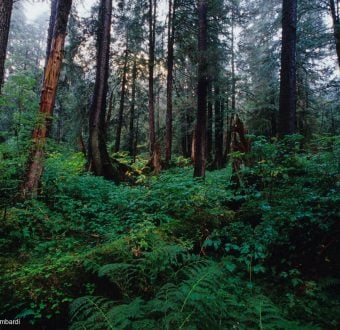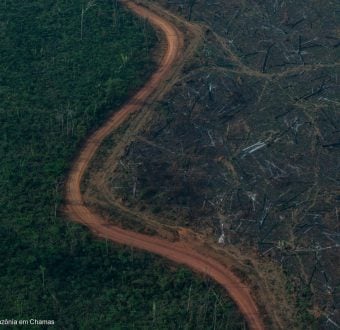These particular lands are threatened by the controversial proposed São Luiz do Tapajós (SLT) mega dam, which would permanently affect the livelihoods of Munduruku in the region, cause forest destruction, and impact globally important ecosystems.
“This an important battle not just for the Munduruku people, but for everyone around the world since we are talking about one of the biggest forests that still exist in the planet,” says Juarez, chief of Sawré Muybu – one of the villages that will be affected by SLT.
The Munduruku have actively worked for the formal recognition of their land rights in Sawré Muybu for over a decade. Protecting these lands would help prevent the destructive SLT project from moving forward. SLT is also subject of a global opposition movement calling on companies not to get involved in its construction.
The Brazilian Indigenous Rights Agency (FUNAI) issued a report recognizing the area as Munduruku traditional land earlier this year, but the Brazilian federal government has still not executed the official demarcation process to draw the boundaries of the territory.
The SLT dam would be the first of five planned in the Tapajós River. It would have a reservoir of 729 square kilometers (almost the size of New York City), flooding part of the Munduruku land and drive an estimated 2,200 km2 of indirect deforestation as a result of roads and other infrastructure related to the construction and migration to the area.
Greenpeace is calling on international companies like Siemens and GE not to get involved in building the dam. SLT has been compared with the infamous Belo Monte, whose licensing and construction was furthered through corrupt kickback schemes according to official testimonies central to the ongoing historic corruption scandal that provoked the impeachment of President Dilma Rousseff. Companies who are today now partially owned or controlled by Siemens and GE supplied Belo Monte with key equipment like turbines and gas lines.
“Siemens, GE and any other company looking for global leadership on renewable energy and technical innovation must not get involved in this unwanted, unnecessary and devastating dam,” said Daniel Brindis, Greenpeace USA Senior Forest Campaigner.
ENDS
Note:
Images of the activities at Sawré Muybu can be found here: http://photo.greenpeace.org/collection/27MDHUWOELQ
Contact:
Rodrigo Estrada, [email protected], 202-344-9292



